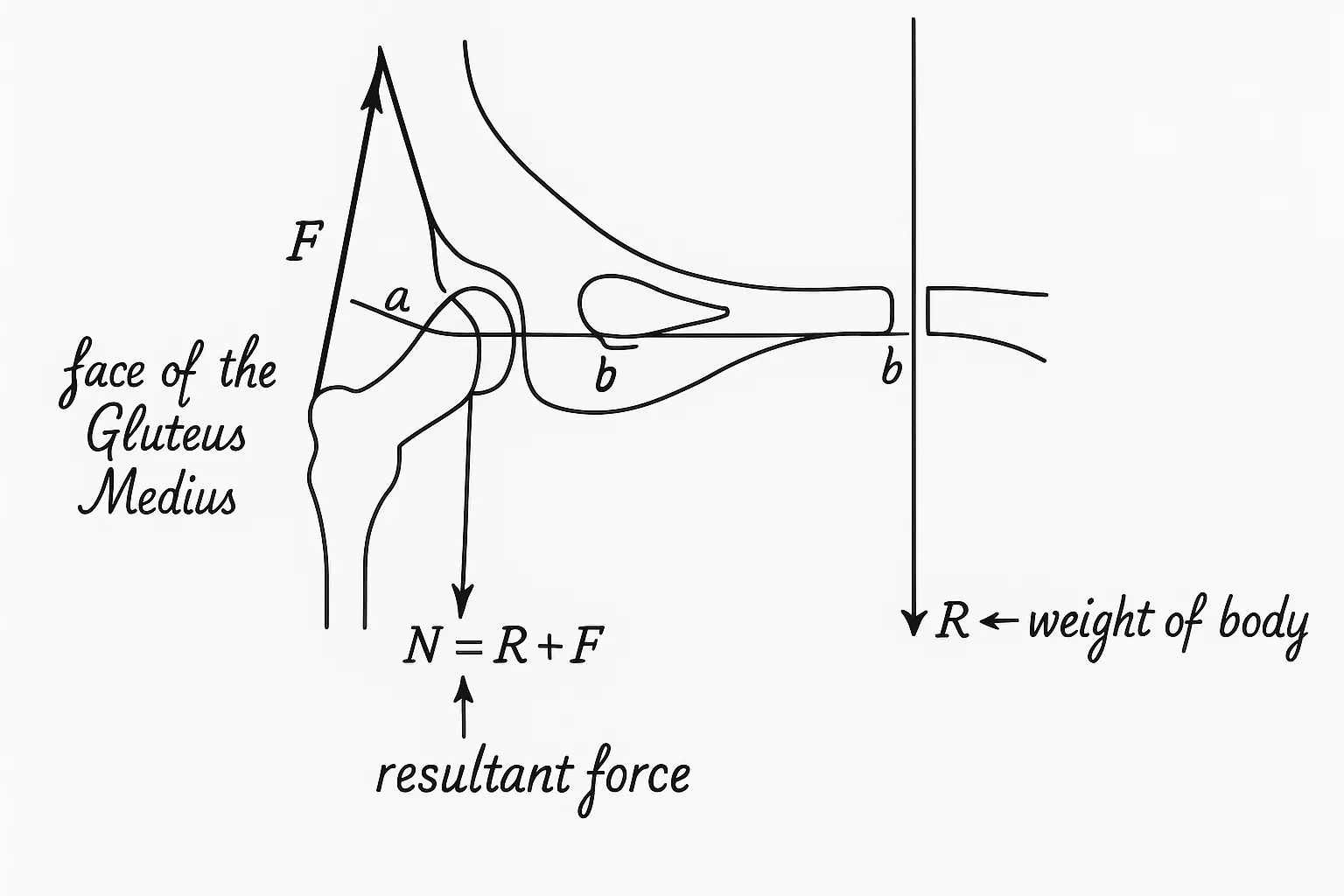
Pauwels Balance—The Science Behind Joint Pressure
Pauwels Balance is a biomechanical concept that reveals how posture, movement habits, and even minor weight changes dramatically influence the pressure within the hip joint. By understanding this concept, active people in Santa Fe can make smarter choices to protect their hips and prevent joint injuries over a lifetime.
The Formula—How Pressure Is Determined
Pressure inside the hip joint is calculated using Pauwels’ formula:Pr=NSPr=SN
Where NN is the total force (body weight, adjusted for movement) and SS is the contact surface area between femur and socket (cm2cm2). A smaller surface area or higher force both result in more pressure per square centimeter.
Real-World Pauwels Examples
- Neutral Standing
For a 72 kg person, body force is about 240 kg distributed over a hip surface of 12 cm²:Pr=24012=20 kg/cm2Pr=12240=20 kg/cm2This even distribution represents an optimal scenario for minimizing joint stress. - Turned-Out Leg (Reduced Surface Area)
Same person, but with hip rotated outwards (as seen in ballet, yoga, or poor standing habits):Pr=2406=40 kg/cm2Pr=6240=40 kg/cm2The pressure doubles because the same force is distributed over half the surface area. - More Weight + Turned-Out Hips
A 90 kg person (heavier, with turned-out hips):Pr=3606=60 kg/cm2Pr=6360=60 kg/cm2Triple the pressure compared to the neutral stance, making the joint more vulnerable over time.
Why Pauwels Balance Matters—Relatable Scenarios and Risks
Daily movement, sports participation, aging, and even footwear choices can all shift the balance between healthy and harmful pressures at the hip joint. Doubling or tripling joint pressure through habit or body weight quickly raises risks for cartilage damage, arthritis, or injury.
Applying Pauwels Principles for Hip Health
- Recover Alignment: Coaches and therapists use exercises (like myofascial stretching, segmental strengthening, ELDOA, and posture exercises to maximize hip contact area, sharing pressure safely.
- Personal Example: If standing with toes out or always crossing legs, consider retraining posture—it directly impacts joint longevity.
- Athlete’s Perspective: Dancers or martial artists should be strategic about hip turnout; recreational athletes benefit from alignment-focused warmups.
building a foundation for a better life.
Find out more @

Leave a Reply